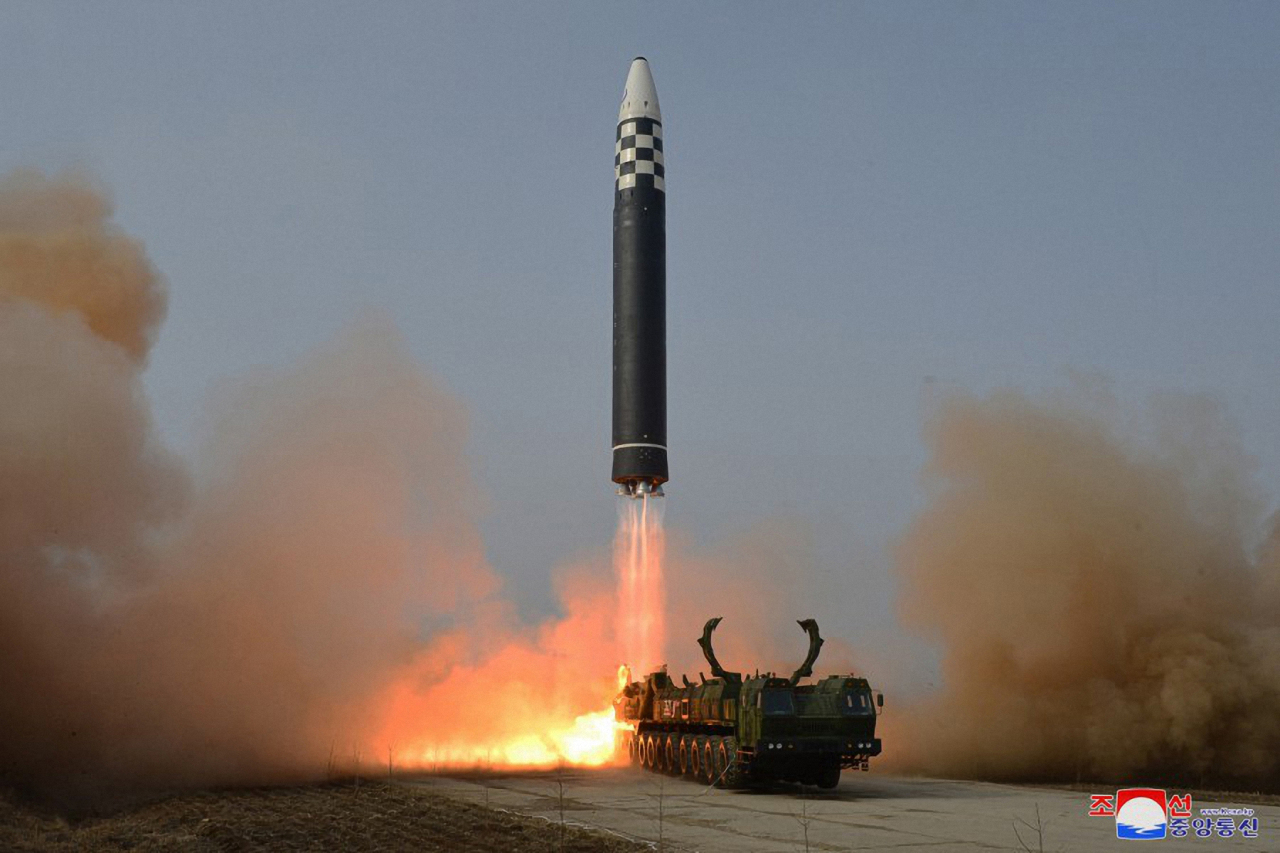NK missile tests aimed at defeating US missile defense: CRS report
By YonhapPublished : April 12, 2022 - 09:18

WASHINGTON -- North Korea's recent missile tests appear to be aimed at developing capabilities to evade US missile defense systems deployed in the region, a US congressional report suggested.
The Congressional Research Service (CRS), however, said the actual capabilities of North Korean missiles remain uncertain in the report released Friday.
"The recent advances in North Korea's ballistic missile test program appear to be directed at developing capabilities to defeat or degrade the effectiveness of missile defenses deployed in the region: Patriot, Aegis Ballistic Missile Defense (BMD), and Terminal High Altitude Area Defense (THAAD)," said the report.
"In addition, North Korea's progress with submarine-launched ballistic missiles (SLBM) suggests an effort to counter land-based THAAD missile defenses by launching attacks from positions at sea outside the THAAD's radar field of view, although local Aegis BMD systems could likely still track these projectiles," it added.
South Korea currently houses a US THAAD unit, and President-elect Yoon Suk-yeol has said his administration may consider deploying additional THAAD units in the country amid continued North Korean missile provocations.
The North has conducted 12 rounds of missile launches this year, including seven rounds in January alone that marked the largest number of missile tests staged in any single month.
Pyongyang has also fired an intercontinental ballistic missile (ICBM), ending its self-imposed moratorium on long-range missile testing after more than four years.
The North has claimed to have successfully test launched its newest and largest ICBM, Hwasong-17, on March 24, but Seoul officials have said the North's initial test launch of the Hwasong-17 on March 16 had ended in failure and that the secretive country actually fired an older Hwasong-15 missile on the claimed date.
The CRS report noted the North's newest missiles, including both the Hwasong-15 and the Hwasong-17, demonstrate "mobility, potency, precision and has characteristics that make the missiles difficult to defeat in flight."
"These traits suggest that the North Korean test program may be intended to increase the reliability, effectiveness, and survivability of their ballistic missile force," it reiterated.
The report in addition noted the actual capabilities of North Korea's newest missile remain unknown, saying, "Without further testing, neither the North Koreans nor others can assess whether the missiles will function as designed."
"North Korean tests have demonstrated growing success and, coupled with increased operational training exercises, suggest a pattern designed to strengthen the credibility of North Korea's regional nuclear deterrent strategy," it added. (Yonhap)












![[Today’s K-pop] BTS pop-up event to come to Seoul](http://res.heraldm.com/phpwas/restmb_idxmake.php?idx=644&simg=/content/image/2024/04/17/20240417050734_0.jpg&u=)





![[KH Explains] Hyundai's full hybrid edge to pay off amid slow transition to pure EVs](http://res.heraldm.com/phpwas/restmb_idxmake.php?idx=652&simg=/content/image/2024/04/18/20240418050645_0.jpg&u=20240419100350)

